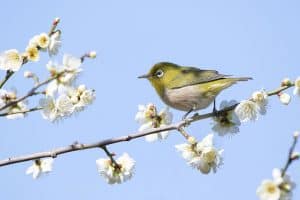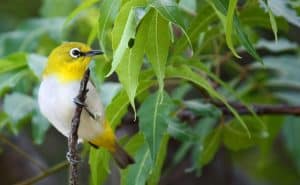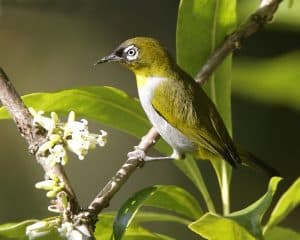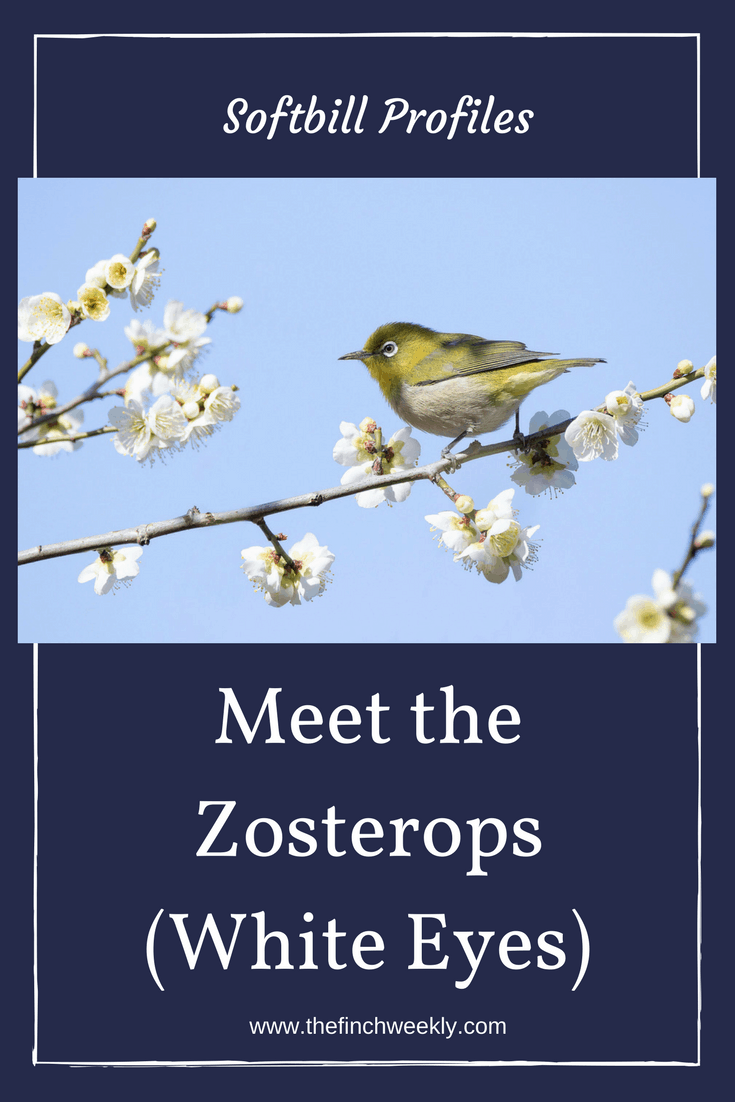When I first started thinking about starting with softbills and whether I could properly house any in my current set up, one of the first species I was recommended were the Zosterops, more commonly known as White Eyes. There are a number of species in the family that are found across Asia and parts of Africa with the Oriental and the Indian being the two most common in aviculture.
General information
The Zosterops are a group of birds that are between 8cm to 15cm in length and their most notable feature is a bright white ring around their eyes that gives them their common name. In fact, there are over 70 species in the family in total, though most of these aren’t known in captivity in the UK or across much of Europe or the US.
Oriental Zosterops
The Oriental White eye (Zosterops palebrosus) is a native of tropical Asia, living from the east of Indian across south-east Asia into Malaysia and Indonesia. They typically live in a variety of habitats including moist forest, scrub and even in drier areas such as the desert areas of western India.
The birds are around 8-9cm in length and have a yellow-olive upper body with yellow throat and vent and a greyish-white belly. They have the distinctive white eye ring and both of the sexes look much the same so for captive birds, DNA is often needed to get a definite pair. There are around eleven subspecies spread across the range and there can be minor variations in their appearance, for example the underbelly can be more yellow than grey in some.
Japanese White-eye
The Japanese White-eye (Zosterops japonicas) is the species that is found in Japan but also across Korea, China, Taiwan, Vietnam and the Philippines. It has an olive green back and pale green underside with a green forehead and yellow throat. The wings have dark brown feathered edged in green and they have the prominent white eye ring.
The birds are sociable and spend most of their time in the trees. However, the form monogamous relationships with a single mate.
In captivity
Generally, these birds make good softbill starter species, although you do want bird keeping experience before starting with them. As with most Asian and African species, they do need protection in winter and heat to help them cope with the cold. This means heating and protecting their aviary or keeping them inside.
The White Eyes are known to live happily with other species including small waxbills and other softbills such as the Pekin Robin. They learn to trust their keepers with patience and will often come to the hand for food. Their diet is one element that makes them a little harder to keep – they need fruit, berries, universal food, live food and nectar. But all of these things are readily available from good pet suppliers (and the supermarket for fruit and berries of course).
Nectar should be fed twice a day in hot weather to stop it spoiling and any uneaten fresh food should be removed at the end of the day. Ready-made nectar is available and there are lots of recipes on the internet to make your own while proper nectar feeders can be bought to help make the process straightforward.
Breeding
The Zosterops species make their cup shaped nest from moss, grasses and spider’s webs, constructing it in vegetation, though captive pairs have adapted to use open fronted nest boxes. They are generally good parents once they start and can have a number of clutches a year. Two to four eggs are laid and incubated for 12-14 days by both parents. They leave the nest at around 12 days and are fed by the parents for around two weeks after this. Live food is crucial when breeding as this is almost exclusively what they feed their young.




I found this a very useful Article.
Many thanks,
PB
Thanks!